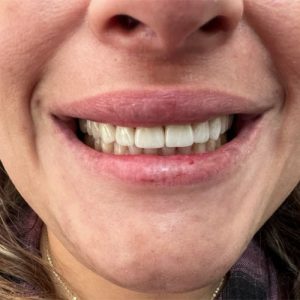Cosmetic Dentistry
Cosmetic dentistry is the branch of dentistry that focuses on improving the appearance of your smile. Common cosmetic dental treatments include teeth whitening, dental bonding, and veneers.
What’s the difference between cosmetic dentistry and general dentistry?
A general dentist is responsible for various dental services that help prevent, detect and treat various dental conditions. They offer routine checkups and cleanings to remove plaque and tartar from your teeth. They also provide restorative dental services like fillings, crowns, and bridges to restore and improve the function of your teeth. On the other hand, cosmetic dentistry aims to improve your smile’s aesthetics. Cosmetic dentists help you enhance the appearance of your teeth and gums through various treatments such as teeth whitening, veneers, and gum contouring. Unlike general dentistry, cosmetic dentistry is elective and often not necessary for maintaining good oral health. However, cosmetic dental treatments can improve your self-confidence and quality of life.
What are the advantages of cosmetic dentistry?
Cosmetic dentistry services can:
- Enhance your smile.
- Brighten dull, stained teeth.
- Improve the shape of your teeth.
- Conceal chips and cracks.
- Bring balance and symmetry to your smile.
- Boost your confidence.
What are the disadvantages of cosmetic dentistry?
Cosmetic dentistry enhances teeth appearance, rather than addressing oral health issues and isn’t covered by insurance. Teeth whitening, bonding, veneers, and implants are common treatments. Costs vary with treatment complexity and dentist selection. While cosmetic dentistry can improve smiles, proper oral maintenance and checkups are necessary. Porcelain veneers need periodic replacement and cannot be reversed. Consult with your dentist to determine if cosmetic dentistry suits you.
Veneers






Composite Fillings
Tooth-Colored Fillings
Composite resins are a popular choice as tooth-colored fillings for their durability and resistance to fracture for small- to mid-size fillings that withstand moderate chewing pressure. They are used for either front or back teeth and are great for individuals who desire a more natural dental appearance.
However, they are usually more expensive than amalgam fillings and may not be covered by some insurance plans, although they are becoming more popular than gold or amalgam fillings.
Composites can be less durable and require more frequent replacement than amalgam fillings, and placing them takes longer since the cavity must be kept clean and dry.
Daily brushing with fluoride toothpaste, flossing, a balanced diet, and regular dental visits can significantly reduce the risk of dental decay and illness.


